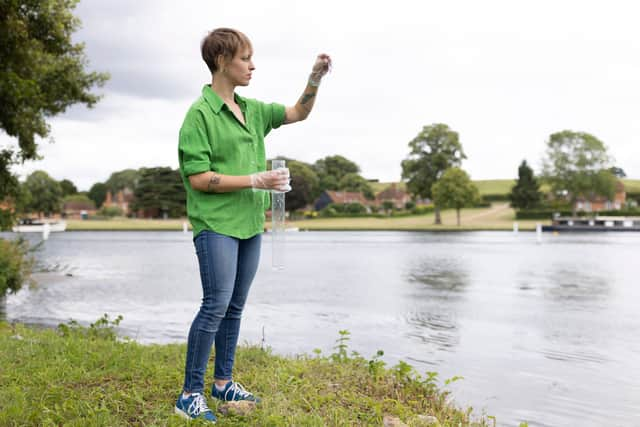‘Crucial’ full health check of England’s rivers not taken since 2019 - with the next not until 2025
and live on Freeview channel 276
A health check of England’s rivers and lakes has not been undertaken by the Environment Agency since 2019, according to a new investigation.
Before 2016, the tests were done annually but the government has now chosen to not deliver a complete update until 2025 - a six year delay.
Advertisement
Hide AdAdvertisement
Hide AdThe 2019 assessments found that just 14% of rivers in England were in good ecological health and none met standards for good chemical health.
The Guardian and Watershed Investigations, which works with the Wildlife Trusts, found that partial results were published this month but not flagged in the usual places on the Environment Agency or Defra’s website.
The investigation found that no chemical assessments have been made, fewer ecological tests have been taken, and no canals, coasts, transitional waters or aquifers have been tested.
The lack of assessment means it is hard to know the true state of England’s waterways, whether they are improving or deteriorating.
Advertisement
Hide AdAdvertisement
Hide AdHowever, the reduction in testing frequency is in line with official guidelines from the Water Framework Directive (WFD).


A spokesperson for Defra told the Guardian that the Environment Agency was legally obliged to publish a full set of data for every water body in England every six years.
The spokesperson said: “The last full set was in 2019, with the next in 2025. However, to help with our work, and that of our partners, in the interim we have recently published a limited dataset that was collected between 2019 and 2021.
“We have deliberately targeted most of our sampling at water bodies with suspected problems so that we can get the evidence for investment (for example, from water companies and partners) where it is most needed. We haven’t included chemical or groundwater status which means not all water bodies have been updated.”
Advertisement
Hide AdAdvertisement
Hide AdUnder the WFD, all water bodies were meant to meet ‘good’ status by 2015 but the deadline was extended to 2027.
In 2017, former Environment Agency chair Sir James Bevan told a government select committee that it would not be possible to meet the 2027 date and more recently he has said the way WFD assessments are made needs to be changed.
He said that the “one-out-all-out rule” hides any improvements that are achieved across other parameters - as currently if a water body fails on one the whole river fails. Campaigners say there needs to be up to date information on the state of our rivers as it is “crucial” to “help us target action to protect and restore them”.
Ali Morse, water policy manager at the Wildlife Trusts, told the Guardian: “Waters are predicted to remain polluted until 2063 because of long-lasting chemicals found at every site checked, but that doesn’t mean we should now stop looking.
Advertisement
Hide AdAdvertisement
Hide Ad“We need to take action to tackle the pollutants that we can do something about.”
The investigation comes after research earlier this year showed that more than 80% of England’s rivers and lakes contain harmful ‘forever chemicals’.
The rivers with the highest numbers of chemicals included the Mersey, Stour, Colne, Thames, Trent, Yare, Irwell, Medway, Humber and Avon.
Dr Rob Collins, Director of Policy and Science at the Rivers Trust, said the results are “shocking” and “could be just the tip of the iceberg”.
Comment Guidelines
National World encourages reader discussion on our stories. User feedback, insights and back-and-forth exchanges add a rich layer of context to reporting. Please review our Community Guidelines before commenting.
